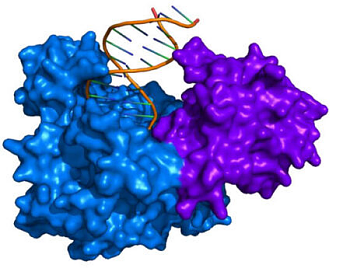
RPA, is it a good fit for your
research?
Find
out if RPA is right for your research and how to use it to potentially improve
your end results via isothermal activity. Our newest resource takes a look into
getting started with RPA, its benefits, and its general uses. Our Scientists
have curated an informative new resource including multiple publications for
those who are considering trying RPA.
What
is RPA?
Recombinase Polymerase Amplification
(RPA) is an enzyme- based alternative to Polymerase Chain Reaction (PCR) that
amplifies isothermally. Like PCR, the primary objective of RPA is to make
abundant copies of a targeted DNA sequence. Both PCR and RPA use a set of
primers that target a DNA sequence of interest and a polymerase to make copies
of that DNA sequence. RPA also achieves max amplification quicker than PCR.
We
supply several publications and elaborate on the history and basic principles
of this isothermal enzyme-based alternative to Polymerase Chain Reaction
further in the article. Click below to read the full article and resources.

Figure 1: Representation of the
structure of an RPA polymerase (PDB ID: 2HHS) with bound DNA.
3' Nuclease
domain is purple, polymerase domain is blue, DNA is depicted as an orange
helix.
Figure 2: Ribbon representation of UvsX (PDB ID: 3IO5), a DNA recombinase enzyme.
What
Enzymes are needed?
We discuss the four enzymes needed (T4 UvsX DNA
Polymerase, T4 UvsY
Protein, T4 gp32 and Bsu DNA
Polymerase) and their roles in the reaction.
Our team compiled over 30 publications
that cover the history of RPA, uses of RPA, and options for optimization of
RPA.
To
view the full in-depth article and to learn more click the button below:
Intact Genomics RPA Related
Products
(주)엘바이오시스템은 Intact Genomics의 한국공식대리점입니다. 제품의 주문 및 관련정보가 필요하시면 전화, 이메일로 문의해 주세요.